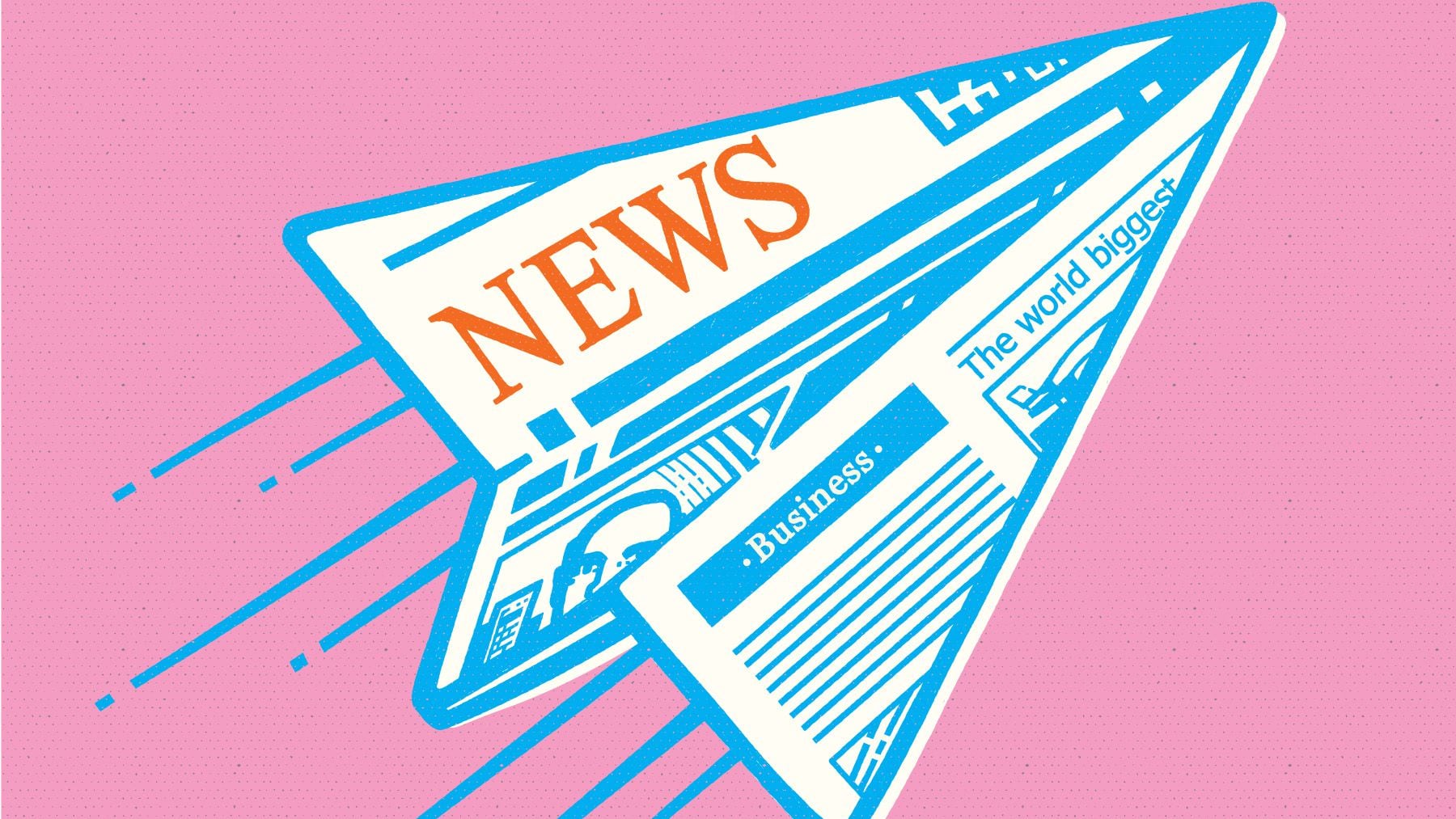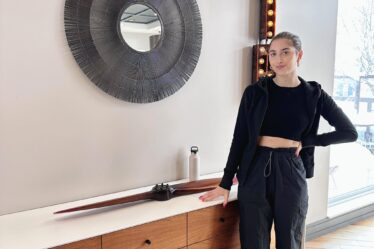
Beauty writing is nice work, if you’re lucky enough to get it.
Last year saw a peak in media industry layoffs — sister years include 2008 and 2020 — but 2024 is already shaping up to reach new heights. The other beauty writers I used to see around town, where we’d wear our workplace titles like armour, have increasingly gone freelance.
It’s not just us. Tech writers, culture writers, TV writers; no beat is safe. It feels at times like the roof is falling, and we’re scrambling for some place to hide and, hopefully, wait it out.
Substack is a safe place. So is Ghost, or Beehiiv, or any other one-stop-shop paid newsletter platform under whose umbrella writers can not only find refuge but a steady income, too.
“Essentially it’s an opportunity to create another revenue source doing what writers do — write,” said Erica Metzger, who has published the newsletter The Beauty Loop since 2019. In the process, these writers and platforms are also redefining the editorial landscape — the voices that critique, comment and expand upon the billion dollar beauty industry.
Are there too many newsletters? Almost certainly yes. And yet, after a few weeks of bringing up the topic in nearly every semi-relevant conversation I have had the pleasure of having, it’s hard not to notice that a lot of people love the newsletter deluge. The rest work at publications. The side eyes feel genetically related to those cast a decade ago by magazine folk whose fashion show seating assignments had been upset by Blogspot power users. We know it can be demoralising to anybody who has spent years or more in service of a hierarchy to watch others be vaulted past them with no brand name to fall on, because we all watched “The Gilded Age.”
Substack can be a fast vehicle, and a well-read one can turn anyone with a voice into a tastemaker. Laura Reilly was a fashion and beauty e-commerce writer-turned-permalancer when she launched her shopping-forward newsletter Magasin, in 2021. Today, it has around 23,000 paid subscribers. (“It’s pronounced ‘magazine,’ but it’s spelled in the French way that you say ‘store,’” she explained to Into the Gloss.)
Are there too many beauty newsletters? Almost certainly not: Substack lumps them into its broader “fashion and beauty” category, where, of the top 50 stacks, only three are themed to cosmetics exclusively or centrally. Beauty is “not a saturated space yet,” said Jessica DeFino, whose newsletter is number three on the list — after Joanna Goddard’s but before Leandra Medine Cohen’s. A former beauty editor at The Zoe Report, DeFino started her newsletter in May 2020, in an effort to self-publish stories in the wake of frozen freelance budgets; she called it “The Unpublishable.”
One of her first reports, on the lack of diversity in nail polish advertisements — “Where Are All The Brown Hands?” — is a representative example of her work, which takes a critical and intersectional look at the systems that make up the contemporary beauty industry. With the newsletter, she’d found her form; this month, DeFino relaunched The Unpublishable as the glossier-titled The Review of Beauty.
“You take advertisers out of the equation, you take affiliate sales out of the equation, and what lies on the other side of that is just like a much richer discussion and exploration of beauty,” she said.
Anita Bhagwandas, who writes The Power Room, agreed: “You can’t always hold those not-great aspects of beauty, or the systems of oppression that operate within beauty, to account in traditional media.”
As a freelancer, DeFino may have made $40,000 in a good year. Now, she makes six figures from her Substack subscriptions. Even more valuable, she’s made a name for herself. Now, the outlets that passed on her stories reach out to her regularly. She usually says no. “I make more money per word writing for myself, and have more fun doing it.”
Call the authorities on the Substacks, and who will show up? Those who used to preside over product recommendations and how-to service for national magazines — Allure’s former editor-in-chief Michelle Lee and O’s former beauty director Val Monroe — have turned to email to preach directly to the masses. An ad could take months to convince a person to try a new foundation, while a newsletter serves in the manner of a greased ice luge down the purchase funnel. In Reilly’s Magasin, recommendations are cast in the voice of a funny friend whose taste you find irresistible, but they also come surrounded by news and diaries, and regularly — sometimes four letters in a week.
“Big picture, my income is greater now than it was when I worked in-house,” Reilly told me.
Imitators hoping to create their own Magasins tend to lean too heavily on the product recommendations and personal shopping edits. Certainly these resonate with audiences, who may follow a beauty writer long after they’ve left their job of beauty writing. But are they worth paying for when most are shilling the same things?
A half-decent newsletter is a heavy sword, and not many can hack it. Those that can offer content of bona fide value, be it thoughtful critique or original reporting, or those who can turn their shopping lists into candy, are most likely to thrive.
“It brings me back to the original days of blogging,” a VP at a communications firm told me, particularly in how brands and companies are now looking to individual contributors for launch exclusives and on-the-record conversations over traditional outlets, who have no choice but to double-down on newsletters.
New York Magazine’s The Cut syndicates Monroe’s “How To Not F*ck Up Your Face”, Red has syndicated Bhagwandas’ The Power Room, and Bhagwandas and DeFino both contribute to The Guardian.
Newsletters can be corporate watchdogs, and they can also be corporate tools. When Metzger started The Beauty Loop, the only other such industry-focused publication was called Media Intel, run by the publicist Jaime Maser. (Maser’s might be the longest running beauty newsletter in digital history — she started charging for it in 2016, the year before Substack launched) Using Memberful for subscriptions and Mailchimp for content, Metzger has styled her newsletter as an industry-wide resource, and charges accordingly; up to $600 for mid- to large-sized beauty press corps, though she writes a free letter for journalists and writers.
“My focus was simply building an audience and providing essential and useful information to assist our jobs,” she said. “Which keep getting harder.” Metzger will also partner with brands or agencies to run ads, classifieds or collect research.
All of this would be of little consequence if major outlets weren’t withering in inverse proportion. Publishers like Condé Nast are plagued by layoffs, and are scraping their beauty teams clean; digital bastions like Refinery29 are simply powering off. The irony of Into the Gloss interviewing Reilly on the occasion of one of the site’s relaunches is that it exemplifies a taste shift away from websites and into inboxes.
“I think the newsletter format can push the beauty media forward in terms of proving what readers want, which is not TikTok trend coverage.” DeFino told me. “Beauty readers are smarter than that, they want better than that, they deserve better than that.” They’re willing to pay for it, too.



